Cuba, the largest Caribbean island is famous for many things: white beaches, rum and cigars, music and dancing, history and architecture and old American cars. Since my first brief visit in 2004, tourism in Cuba boomed, especially in Varadero, Havana and Trinidad.
Many people visit Cuba as part of all-inclusive packages to the Varadero beach resorts. A good proportion of those who do venture further afield, do so on organised tours. Whilst, of course, there’s nothing wrong with those travel styles, they’re not for Andy and me as we prefer independent travel. This led us to our discovery of how challenging and frustrating independent travel to Cuba can be.
Affiliate Link Disclosure: This post contains affiliate links. If you use them to make a purchase, we may earn a small commission at no extra cost to you. As an Amazon Associate, we earn from qualifying purchases. Learn more in our Affiliate Link Disclosure.
Tips for Independent Travel to Cuba
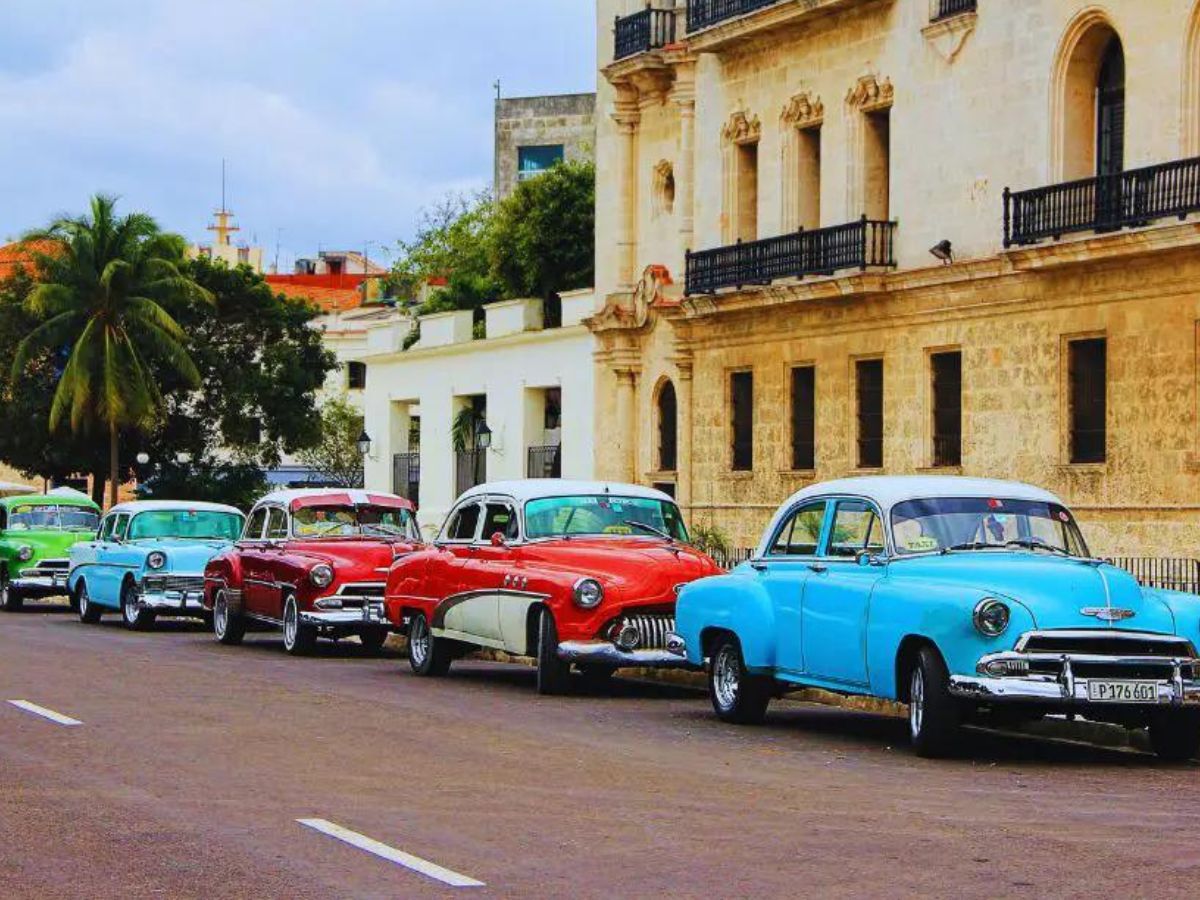
Our trip to Cuba was one of our most challenging travel experiences to date (and we’ve both travelled extensively), so we wanted to help those who prefer to ‘go it alone’ like us. Cuba’s not somewhere that’s easy to turn up and just wing it; you need to do your research and planning first, including what to pack for Cuba.
So based on our experiences and the main causes of our headaches during our time in Downtown Varadero, Santa Clara, Trinidad and Havana, some of the best places to visit in Cuba, here are our 11 tips for independent travel to Cuba.
1. Take Plenty of Cash
ATMs in Cuba charge an extra 3-4% on top of your bank’s charges. In addition to the fact they’re often out of money. For Americans, there’s the extra complication that ATMs don’t accept cards issued by American companies. The best way around this is to take enough cash to last your trip. As Cuba’s far from being a cheap place to travel (and trust me, we tried to do it on a budget) take the amount you think you’ll need plus at least half again. You can always take it back home if you manage not to spend it all. For an idea of the budget you may need Flight of the Educator has shared her Cuba Budget for five days.
Unless you are American, don’t take American dollars with you, as the currency exchange will be poor. Instead, if you prefer to take cash take British Pound Sterling or Euros. Any other currencies aren’t accepted, but you can use debit and credit cards these days with no problem.
2. The Dual Currency System No Longer Exists
Cuba used to have a dual currency system. Alongside Cuban Convertible Peso (CUC) was the local Cuban Peso or Moneda Nacionale (CUP)
tensions eased and Cuba allowed Americans to travel, they created two currencies; CUC (Cuban Convertible Peso or ‘Cuban dollar’) which was aligned to USD, which tourists must use. The second is CUP (Cuban Peso) which is for the locals.
However in January 2021, the dual currency system was abolished, so the CUP is now the only currency in circulation. CUC notes are now unusable, so be sure to check your change to ensure it’s in CUPs.
3. Prepare for Limited WiFi and Buy a Local SIM
Getting WiFi access in Cuba is troublesome, to say the least. It’s controlled and restricted by the government and some websites are restricted.
You can buy an ETESCA WiFi card which can be bought per hour, but these are a pain to find and use.
A far better option is to buy a local SIM Card, as your foreign SIM cards will most likely not be able to roam in Cuba. The Cubacel Tur SIM card, supposedly has the best coverage and you can buy one when you arrive at the airport.
Another option is to use an eSIM like Airalo if this is supported by your phone. They have a deal for 1GB for 7 days which should be sufficient for Googling and using your map to get around.
So with the likelihood of troublesome internet access, there are several ways you can prepare to make independent travel to Cuba easier:
- Print out Travel Documents – you won’t be able to access accommodation or flight confirmations unless you screenshot them on your phone. I always keep mine safe in my money belt (although I rarely actually wear it).
- Pack a Guidebook – a guidebook, either a paperback or an e-book will be invaluable for ideas for accommodation, food, drink, sights and activities. Dad bought us a great Cuba Lonely Planet Guidebook for Christmas but it was a bit too heavy for our bags. Instead, we downloaded the Cuba Lonely Planet Kindle version of it and a Cuba Rough Guide kindle version.
- Download a map app – it’s practically impossible to get hold of a paper map in Cuba and if you do find one it will be expensive. You can’t download offline maps without wifi so your best bet is to download a map app before leaving for Cuba that works offline, just in case. We usually prefer to use Google Maps, but, this doesn’t work very well in Cuba; instead, we recommend using the Maps.me app. This was a lifesaver when it came to finding ATMs, restaurants and directions offline! Beware that occasionally it can be slightly out of date although it worked most of the time for us and is enough to prevent you from getting (too) lost!
- Download books, films and music – if you like to have any of these for entertainment make sure you download them before leaving home. You won’t be able to download once you’re in Cuba even if you do buy a wifi card. My Kindle Paperwhite got a lot of use in Cuba.
4. Stay in Casa Particulares
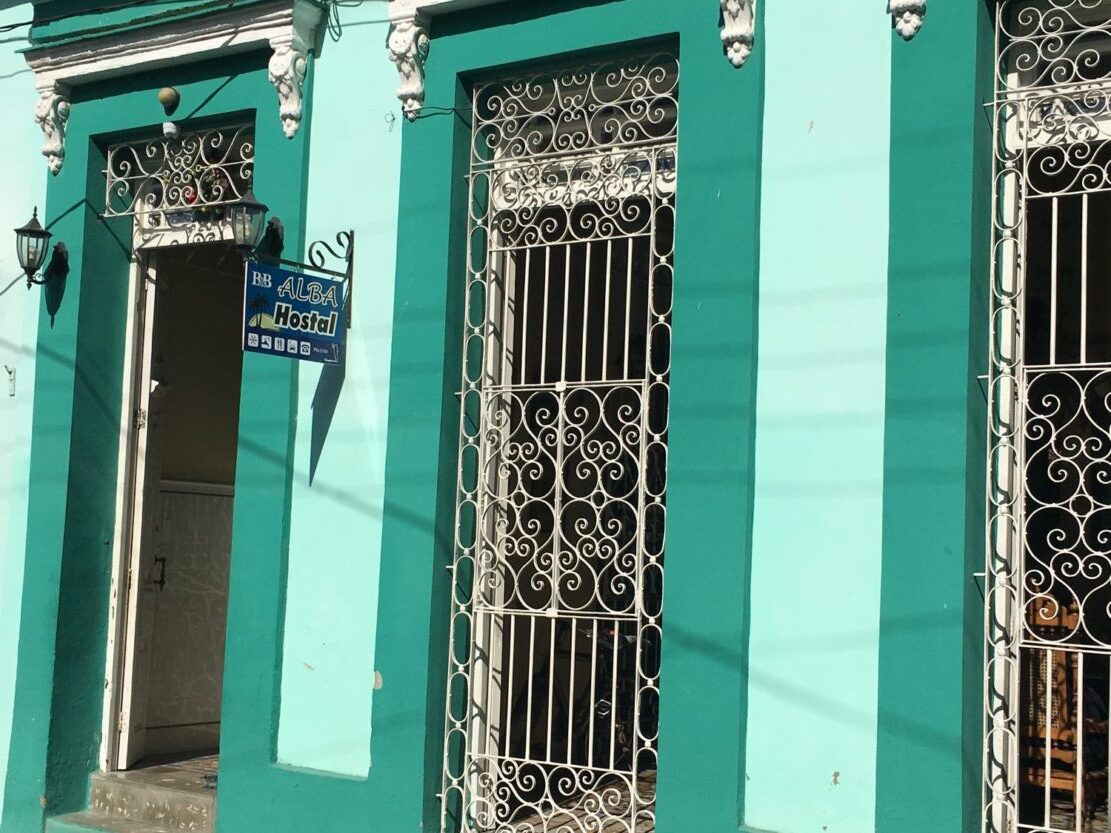
If you prefer to book your accommodation before your trip you can book hotels in Cuba on Booking.com.
A better option in our opinion is to stay in casa particulares, which are rooms in Cuban family homes or a private apartment that they own. Staying in these gives a fantastic insight into real Cuban life. You’ll find most families warm and welcoming. Usually, the price includes some sort of breakfast ranging from a simple continental to huge feasts of eggs, bread, cake, and fruit. The one we had at our casa in Santa Clara was enough to keep us going all day!
Many hosts also invite you to join them for meals if you wish (at an extra cost); if you do this it will likely be the best meal(s) you’ll have in Cuba.
Nowadays, you can book some casa particulares via Airbnb and other similar websites. It’s a good idea to book your first couple of nights in advance before departing for Cuba. After that, especially if you like to be flexible you should be able to find a casa particular pretty much anywhere once you arrive.
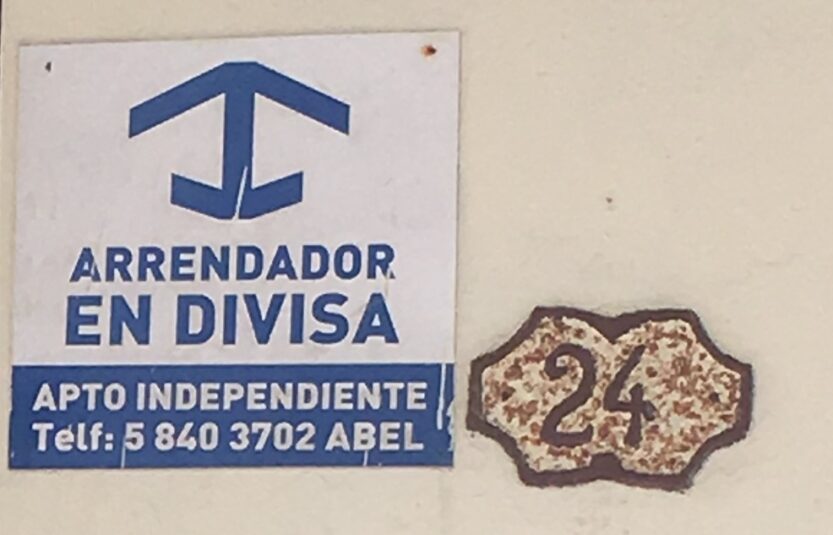
Just look out for houses with a ‘blue anchor’ on or near the front door which indicates that the casa is available for foreigners. A ‘red anchor’ indicates they’re only for Cuban guests – they tend to have lower standards and prices.
5. Lower Your Food Expectations

We found the majority of food in Cuba to be very bland; in fact, blander than bland. It didn’t take long for us to become sick of dry meat and rice and ham and cheese. Ham and cheese rolls, ham and cheese pizza, ham and cheese pasta, ham and cheese with ham and cheese – you get the idea?! This is especially true if you’re on a budget; don’t expect many culinary delights unless you’re able to pay a premium at the more expensive restaurants or high-end hotels. Also, don’t be surprised to be told many items are off the menu in restaurants due to ingredient shortages. This happened to varying degrees nearly everywhere we ate.
A few hints which may help your dining experiences and/ or budget in Cuba are:
- Buy budget food at the hole-in-the-wall joints – these take CUPs instead of CUCs and although it gets repetitive quickly you can pick up a small pizza, spaghetti, or sandwich extremely cheaply.
- Pack condiments and snacks – Apart from in Havana, there was a distinct lack of condiments in eateries. We did see ketchup, mayonnaise, and mustard in a few shops but they were expensive. A great addition to your baggage would be your favourite condiment(s) to liven up the dull food a bit. In Andy’s case, he wished he’d packed Tabasco sauce and Ketchup. Taking snacks like cereal bars and nuts is also a good idea to save a little cash and fill a gap when you’re sick of the other food on offer.
- Eat in paladars – despite finding the food in Cuba, as a whole, pretty dire, there were a few exceptions. Those tended to be in paladars – restaurants set up in local Cuban homes. We had two or three passable meals in paladars, still not amazing and rather pricey, but they made a welcome change to the usual bland fare. If you eat in a paladar try Ropa Vieja or ‘old clothes’ (shredded beef stewed in a tomato and vegetable sauce) and Lobster Pasta. These were the only two dishes that I thought were quite tasty. If funds hadn’t been an issue I’d have alternated these every night; at least until I got sick of them.
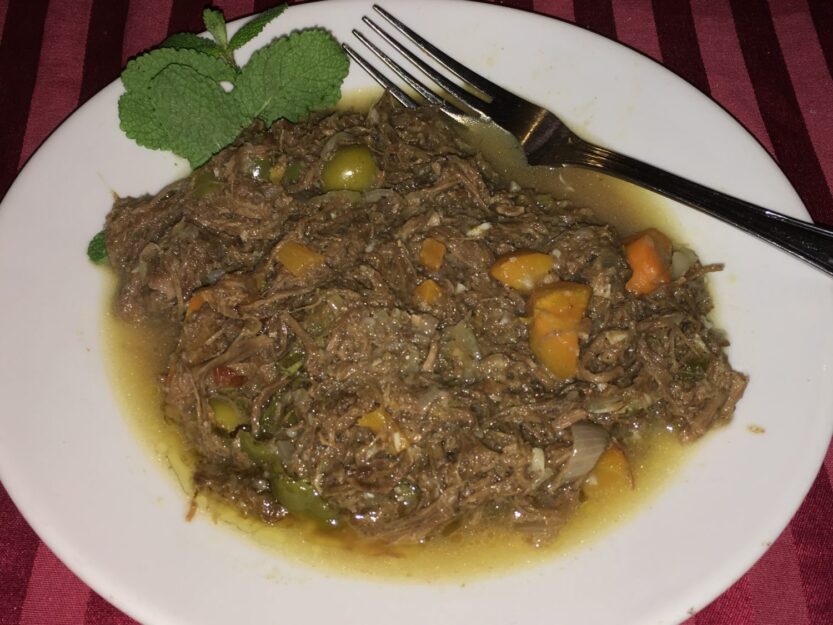
6. Take a Water Filter
As you’d expect, drinking tap water in Cuba is a ‘no-no’ and bottled water is expensive, especially in touristy places. It was about $2 (£1.55) for a 1.5-litre bottle in Trinidad and elsewhere wasn’t much better. This soon adds up when you’re getting through two to three litres of water per person a day. Of course, you can boil water to kill off anything harmful; we tried this though and it produced a white residue which we didn’t fancy drinking even though it was probably safe.
Andy later discovered the residue was natural minerals occurring in the water (or to be more precise – limestone). This would have been fine to drink, but it tasted funny so we decided to put up with the cost of bottled water.
In hindsight, the obvious solution to the water problem is to take a water filter with you. This will allow you to drink tap water and avoid the cost and plastic waste of bottled water. We love the filter water bottles from Water-to-Go, we have a special 15% discount via the EU website or US website. Just use the code CTWT15 at the checkout.
7. Buy or Reserve Bus Tickets in Advance
The main and cheapest form of public transport for getting around Cuba is by Viazul buses. These are government-run buses which foreigners are meant to use. There are also one or two other bus companies that are beginning to offer limited services. There are, of course, also local buses which are cheaper and more flexible. which you may have some luck with depending on how good your Spanish is and how ‘un-foreign’ you look. For the most part though getting a Viazul bus is the main public transport option for foreigners.
It is possible to book Viazul bus tickets online before departing for Cuba. If you don’t book online though, to guarantee yourself the bus and seat you want, you’ll need to go to the bus station to reserve it as early as possible. The more popular the route the earlier you should think about reserving your seat(s). You then have to return to the station on the day of travel an hour or so before departure to pay and collect your ticket. It’s quite a pain and seemingly a waste of time but it’s the only way to be sure you get to where you want to be on time if travelling by bus.
The best way to get around Cuba based on price and convenience is by collective taxi – which is the same as a normal taxi but shared with other tourists going to the same destination. You can arrange these through your accommodation in advance.
Of course, you can also use private taxis but these can work out to be rather pricey.
8. Get Off the Tourist Trail
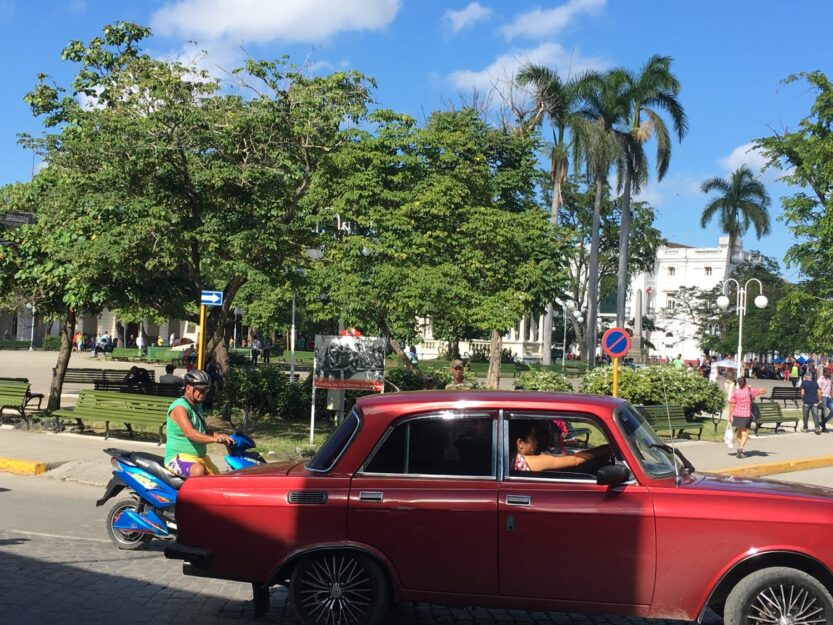
If you’re looking for an authentic Cuban experience during your independent travel to Cuba, you need to get away from the tourist trail a bit. By tourist trail I mean those places that are hugely popular with tourists, especially tour groups. Varadero (Hotel Zone), Trinidad Old Town and Havana Vieja (Old Town) are prime examples. Of course, it’s still good to visit these places – they are popular for a reason after all as Layer Culture shares in a post about things to do in Havana. However, if you want a taste of ‘real Cuba’ head for one of the smaller or less visited destinations.
As we only had a couple of weeks to explore we didn’t venture as far off the beaten track as we normally like to. We did manage to spend a few days in Santa Clara though and it was probably our favourite part of our independent travel to Cuba.
9. Take a Voltage Converter
If you want to take electrical appliances to Cuba that are not compatible with 110V, you’ll need to take a 110V to 240V voltage converter. Some laptops and mobile devices are compatible with both voltages and should specify this on the power supply or charger. It’s items such as hairdryers, straighteners, electric razors and toothbrush chargers that are most likely to need a converter to function correctly. Make sure you double-check the power rating of your products and converter before using them together though.
Andy and I both purchased a BESTEK Travel Adapter Voltage Converter which charges all our gadgets quickly and also doubles as an extension lead. They each came in a handy travel case with plenty of room to stow other items such as USB cables. The only downside is they’re a little heavy, but despite this, we found them invaluable during our time in Cuba and since then.
10. Prepare to Do Your Own Laundry
We didn’t see one single laundry while we were in Cuba; maybe we weren’t looking in the right places but I doubt it. With this in mind, be prepared to do your own laundry. This will typically involve handwashing in the sink or shower so a good addition to your packing is some laundry soap. You can get this in liquid or powder form or you could take a laundry detergent bar like we did, which is great as it doesn’t spill in your bag. We didn’t see this for sale in Cuba so take some with you. To dry your clothes a length of paracord (at least 10 metres) doubled over and twisted makes a perfect washing line.
11. Be Patient and Tolerant
During your time in Cuba, you’ll inevitably become increasingly agitated with the slow, usually poor service, and the queues. This is especially true for government establishments; we think (although we may be wrong) the reason was that the people working have very little reason to help you. They are paid a low set wage unrelated to performance with little risk of reprimand for poor service. Mostly they seem to do as little as possible with no urgency to provide timely and quality service. Potential customers are regularly ignored whilst staff play games on mobiles, chat amongst themselves or do anything except their job. This has the knock-on effect of queues, often very long queues which are really frustrating. It doesn’t help to get annoyed though; instead, just be prepared for it and be patient and tolerant.
Remember that eventually you will reach the front of the queue and get served; if that is, they don’t close first. Yes, that did actually happen to us when waiting to exchange currency at a CADECA. When that happens you just have to try again later! On the flip side, you should receive better service from private casa particulares, paradars and hole-in-the-wall places run by locals trying to supplement their government incomes.
We hope you’ll find these tips useful if you’re planning some independent travel to Cuba and that they help you make the most of your time there. Here 5 things to expect when travelling to Cuba, gives some additional insight into the country.
We’re travelling as a couple but here you can learn more about what it’s like to travel in Cuba as a solo female.
Have you travelled to Cuba independently? Do you have any other helpful tips to share that we’ve missed?
Planning Your Trip to Cuba?
Planning your trip to Cuba? Here are some of our recommended useful resources to help you have the best time possible.
|
● TRAVEL INSURANCE IS AN IMPORTANT CONSIDERATION! World Nomads offers cover for travellers in over 100 countries and True Traveller is a great option if you’re from the UK or EU. SafetyWing is another solution, particularly for digital nomads and long-term travellers. ● Use Wise (formerly Transferwise) for sending or receiving money internationally. It’s cheap, easy and transparent. ● Find amazing flight deals on Skyscanner andKayak. ● Compare rental car prices on Rentalcars.com. ● Booking.com and Expedia usually have the best hotel prices. ● Our go-to for self-catering accommodation is Vrbo. ● Discover fantastic trips and activities with Viator and GetYourGuide. ● Check out Bookmundi, G Adventures, and Intrepid Travel for group holidays and tours. |
Read More Latin America11 Fantastic Things to Do in Antigua, Guatemala5-Day Copper Canyon Train Ride Itinerary, Mexico What is Brazil Famous For? |
Enjoy this post? Pin it for later!
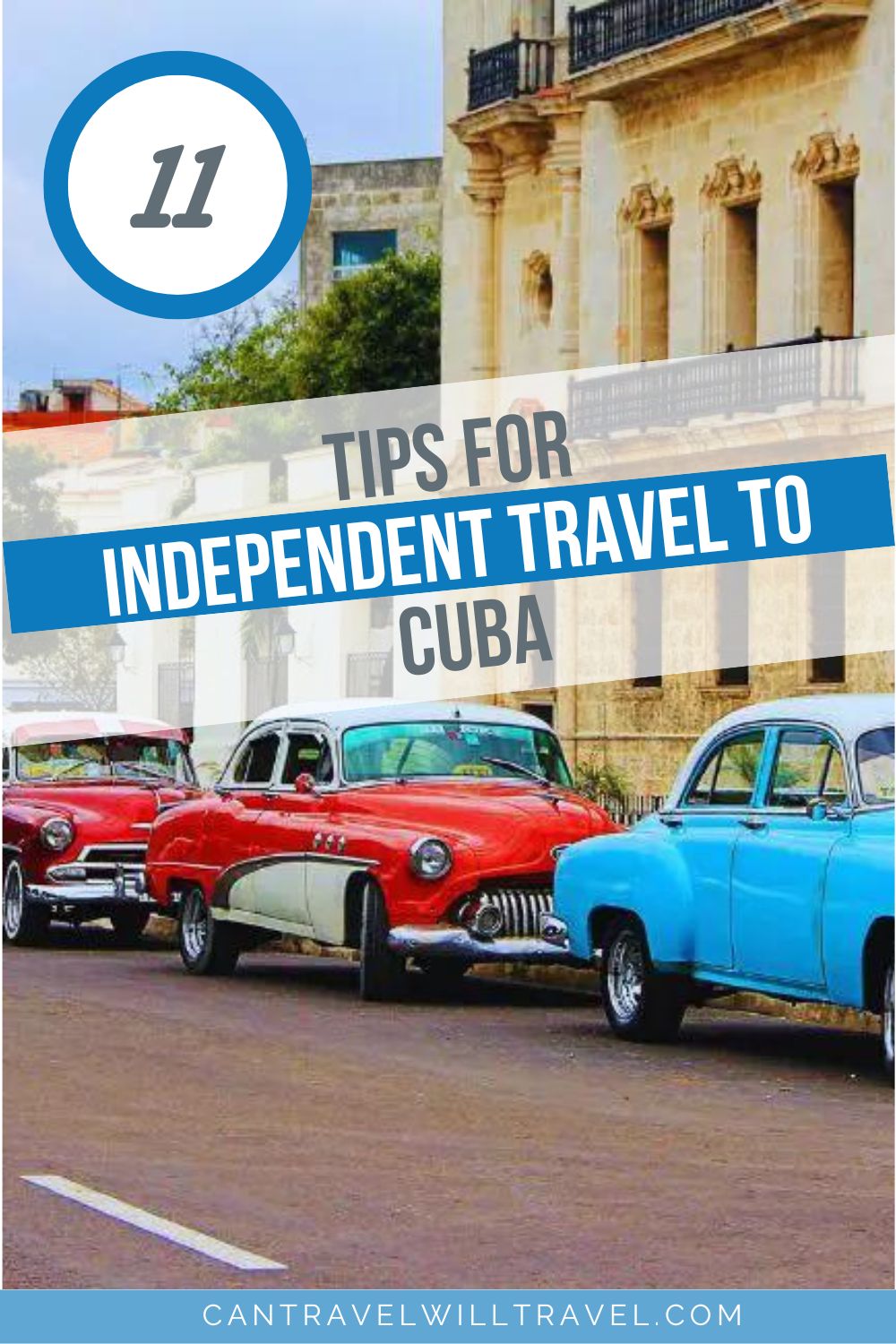 | 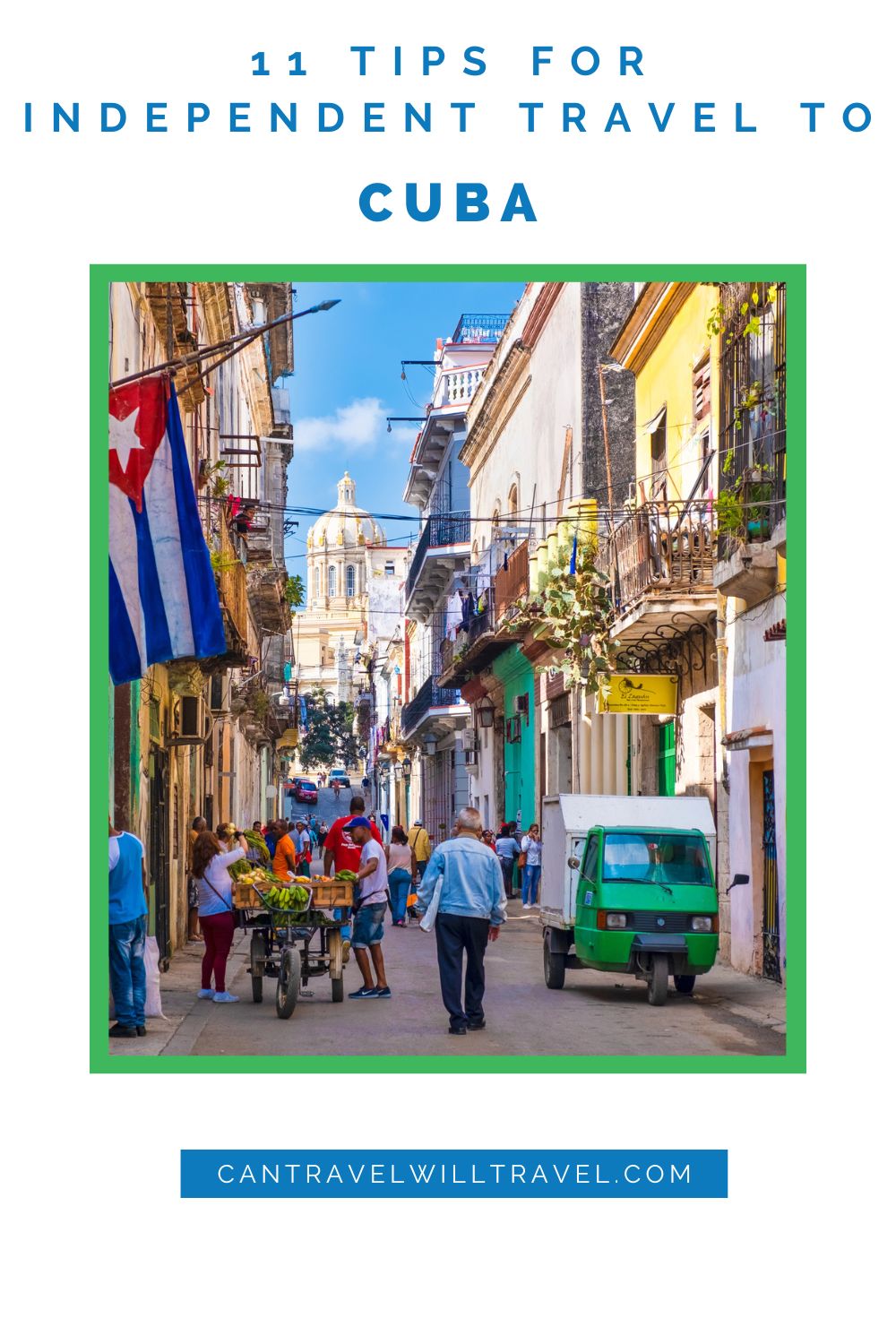 |

Could you please advise me on flying from the UK and any Visa advice? I. Went to Cuba in the 80s as part of a tour and whilst I loved Cuba, it’s the tour part I didn’t enjoy so I want to go solo.
Many thanks
Hi, It was several years ago now that we went to Cuba and alot has probably changed. So I would recommend just researching the
flights on Skyscanner or similar to find the best flight for your budget. Travelling around Cuba without a tour group, we found find,
we just used public transport and researched timetables online, asked in the accommodation we stayed in or went to the bus station to find out timetables a day or two before you want to travel. I hope this helps.
Great tips! I can’t wait to go back to Cuba and travel independently. I’ve only ever done the resort thing and there’s so much more to see! Thanks for putting this together.
Thankyou – I hope it’s of help 😀
We found that the food in the casa particulares was the best – we stayed in one where the owner was previously a chef for one of the top hotels in Varadero. I think we rolled out of that one. The food was amazing, as was sitting on their roof terrace eating it, overlooking a small bay that we’d swum in that morning.
Yes, I did too on my first stay – this time though we must have gotten unlucky and were offered no food in our Casa’s except for a huge amazing breakfast in Santa Clara. Yours sounded great 🙂
Hello Sarah,
We are going to Cuba in March 2024 and plan do travel independently. You posted you stayed at a casa particulares where the owner was formerly a chef at a major hotel in Veradero. Could you send me the name of the casa particulares? Sounds like we will need for good food.
Hi Sarah,
Thanks for your email. I don’t recall mentioning this in my post, so I think maybe you may be referring to a different blog post you read.
If it was in my post – please do let me know whereabouts in the post and I’ll take another look.
Thanks
Tanya
Great tips! I can only not agree with point 4. I travelled Cuba independently last year and we only had amazing food. We just ate in our casa particular or in paladares and it was always super delicious!
Thankyou, I’m glad you had a better food experience than us! I remember it being good on my first visit 14 years ago, this time not so much. However, definitely meals in Casas and Paradars we’re better than elsewhere 🙂
I’d love to visit Cuba – I just wish it wasn’t so complicated with visas and things. Thanks for sharing all these helpful tips! It’s incredible how expensive the atm charges are… good to be forwarned!
I hope you do get chance to visit and our tips help 🙂
Great post! This is more or less my experience in Cuba as well. People should also note that there are random shortages in Cuba; at every other restaurant we went to there would be menu items that were unavailable because they didn’t have the ingredients. In one restaurant, half the menu was unavailable. It’s great for a digital detox! Plus they take 10 minutes off your wifi card every time you log in, so it ends up not being worth spending money on the spotty wifi. That all said, I would definitely go again if given the opportunity!
Thank you! Good point about the random food shortages…I completely forgot to add that in. I will edit to add in in:-)